You can’t really call souls games an acquired taste as it’s not like you can train yourself to like them. No they have to speak to you on some level, tickling a competitive part of your brain that urges you to go on despite the unrelenting challenge that lies before you. It took me a good while to understand that and I’ve come to enjoy the challenge that they provide ever since I got started with Bloodborne. I’ve even enjoyed some of the more off-brand souls experiences like The Surge which, I heard, had many a souls veteran throwing their hands up in frustration. So I feel somewhat odd saying that my experience with Sekiro: Shadows Die Twice has been…less than stellar. To be sure the essence of the souls series is there but there’s just something missing from the experience; that little thing that keeps me playing despite my numerous failures. It’s a shame because I was kind of looking forward to this one, if only because it was another From Software title.
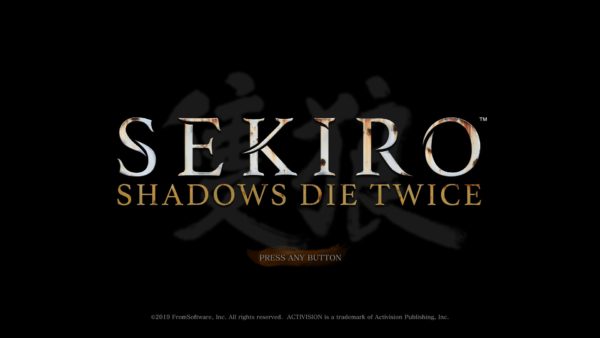
Set in 16th century Japan Sekiro: Shadows Die Twice puts you in charge of Wolf, an orphan who was trained in the ways of the shinobi by his master, Owl. The Ashina clan is on the brink of collapse due to a combination of the now elderly Isshin having fallen ill and the clan’s enemies steadily closing in from all sides. Desperate to save his clan, Isshin’s grandson Genichiro sought the Divine Heir Kuro, who you have sworn to protect, so he can use the boy’s “Dragon Heritage” to create an immortal army. In the ensuing showdown you lose your left arm while failing to stop Genichiro. However instead of perishing in the field where you were struck down you awake in an abandoned temple, an aging sculptor watching over you. Your purpose remains unchanged however, you are driven once again to seek out the divine heir and protect them.
I had never really understood why the souls games always looked like a generation behind but, as it turns out, there’s a pretty good reason for this. Under the hood it’s powered by the Sony Phyre engine, something that was developed originally for the PlayStation 3 and was only given a revamp for the PlayStation 4 in 2013. Sekiro certainly has its moments though, making the very most of what that engine is able to deliver, but there’s no denying that most current gen games have looked a lot better for a long time. Still the one benefit that comes along with somewhat dated graphics is the buttery smooth game play that you’re going to enjoy regardless of how busy things get on screen. As with any souls game that’s going to be key to ensuring that the game is challenging without being frustrating, something that a lot of the souls clones typically don’t get right.
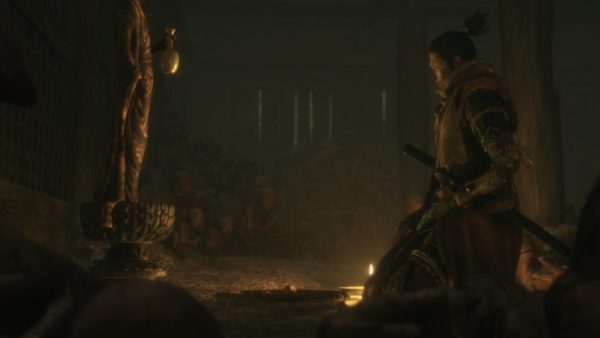
The essence of the souls franchise is strong in Sekiro with many familiar mechanics remaining but a lot more being thrown into the mix to shake up the formula. It feels a lot closer to the traditional souls game than Bloodborne did, however. The biggest change is the lack of a stamina bar and enemies health bars not being as meaningful as they once were. No instead the posture bar is what counts now and if you wear that down, whether by attacking, countering or doing other special moves, you can then perform a one hit kill on them. Stealth also plays a larger part with enemies having a detection bar rather than simply knowing/not knowing that you’re there. Movement is also a bit more varied thanks to the grappling hook, meaning you’ll spend a lot more time maneuvering around than you would have in previous souls games. The traditional upgrade systems are also gone, replaced instead with a more regimented progression based around collecting specific items to increase your various attributes. There’s also a bunch of other minor systems around, as there always is, but given I didn’t spend as long in Sekiro as I usually do with a souls game I couldn’t tell you what they are. So overall it’s very much the format that we’ve all come to know and love, for better and for worse.
Without a stamina bar to hold you back combat is a lot more fast paced than you’d first expect, allowing you to really go ham on enemies should you so desire. Of course any mechanic in a souls game that invites you to be reckless is likely to cause you issues and Sekiro does a great job of lulling you into thinking this could be a beat ’em up title before ratcheting up the difficulty significantly. After then it’s back to the usual routine of figuring out how to pull the smallest number of enemies, deal with them, and then keep moving forward. There’s a greater variety of enemies earlier on than I remember in other souls games which initially threw me a bit, especially when I hadn’t picked up the requisite special moves to deal with a particular enemy that I was coming up. There also doesn’t appear to be any delineation between normal areas and boss areas like there are in previous games, something that kind of throw you off when you encounter what looks like a regular enemy but then turns out to be a boss. It does help keep the pace of the game up though.
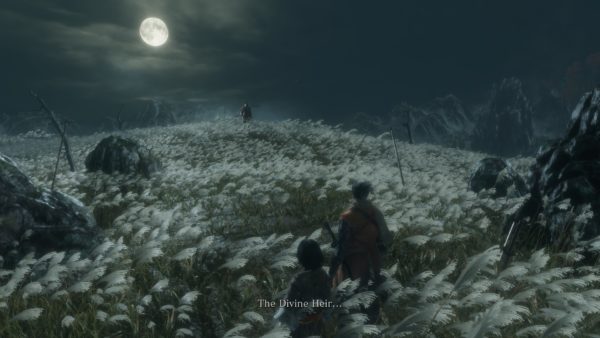
A particularly large deviation from previous souls games is the heavy defocus on gear and stats. Whilst the souls games were never particularly loot bound to begin with there was always certain combinations or particular pieces of gear which could make your life a lot easier for certain encounters. Instead you’ve now got various shinobi implements which you can swap around giving you a bunch of different abilities. Some of them are a necessity for certain enemies, like the axe for the shield enemies, but others are your run of the mill damage/status modifiers like the gun that lets you set oil covered enemies on fire. This certainly one of the parts of Sekiro which I think I didn’t enjoy as much as whilst I’m a huge fan of loot fests (The Division 2 felt exhausting at times) I did like the min/maxing or cheese builds you could do in the souls games that made you feel stupidly powerful, right up until you got pummelled by something of course.
The game loop plays out much the same as it does in other souls games: follow the path, usually die, optimise the path you follow until you either find a shortcut or fast travel point, repeat until end of game. With the ability to come back after death though you have some options available to you, like legging it through a bunch of enemies, dying, and then waiting for them all to wander off before you continue on. Given that you’ve got a few more movement options at your disposal this can be quite a viable strategy some times, indeed that’s how I found my way to a second boss after failing hard at the first one I came across. Sekiro is pretty open in comparison to other souls games from memory although there are a few hard and fast blockers which you’ll need to do in a particular order to keep on progressing. Indeed it was one such blocker that made me put Sekiro down for good as I just didn’t have the will to keep on with it.
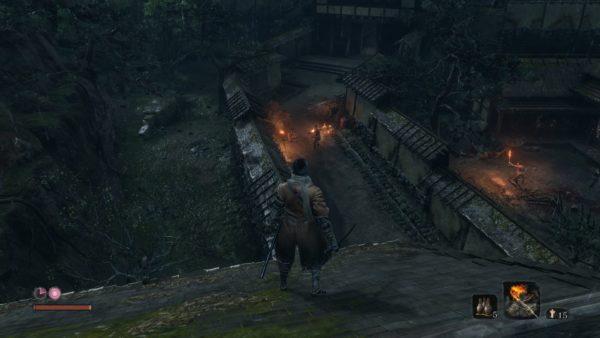
Honestly I couldn’t pinpoint one thing which led up to that feeling. To be sure it’s probably the hardest souls game I’ve played, partly because it’s different to the others but also because there’s a much, much higher reliance on player skill rather than items or levels. But mostly it was that I just wasn’t getting that same rush I used to get from souls games when I’d found a shortcut or beaten a boss. Even the boss battles didn’t feel as engaging as they used to. I used to feel like they tempted you in initially, usually soft balling you with some easily dodged moves and whatnot, before changing it up with a second boss phase or something that’d then dash your confidence all over again. This time around I just felt woefully underprepared for the boss fights when they finally did come along. I did eventually get around to beating one of them but only by cheesing it. Whilst I usually wouldn’t feel too bad about that, this is a souls game after all, this time around it just felt really hollow and I think that’s what killed it for me for good.
Layered on top of that is the story which, whilst being far more direct in its telling than any other souls game I’ve previously played, just wasn’t particularly engaging. There are some cool elements to it, ones I’m sure I would’ve enjoyed exploring further, but it just didn’t hook me in enough to make me want to keep playing. Reading a few wiki articles shows that it’s as deep as any souls game that’s come before it so I’m sure fans of the genre will find a lot to love there. It just wasn’t there for me.
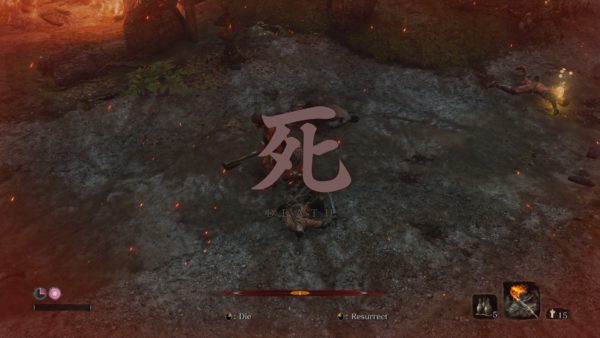
It’s a right shame that I haven’t found joy in FromSoftware’s latest title as I figured that, given the numerous souls games I’ve played before, it’d be a shoe in for something I’d enjoy. All the right ingredients are there and whilst I don’t like some of the new changes I don’t think they’re all to blame for my lack of engagement with Sekiro. Whatever it was it means that Sekiro: Shadows Die twice will go down as one of the more average games of me for this year, being neither terrible nor one that I’ll recommend. It’ll be interesting to compare and contrast this to The Surge 2, due out later this year, as if I find myself enjoying that one I’ll really not know what to think.
Rating: 7.0/10
Sekiro: Shadows Die Twice is available on PC, PlayStation 4 and Xbox One right now for $59.99. Game was played on the PC with a total of 4 hours play time and 3% of the achievements unlocked.




[…] Sekiro rattled me a little bit, making me wonder if I was no longer “gud” enough to play these soulslike games anymore. Part of it is definitely time, I have a lot less of that to dedicate to challenging titles ever since I became a dad, but there’s always that lingering thing in the back of my head that’s telling me father time is catching up to me. So when I saw The Surge 2 appear on Steam I was conflicted, knowing that if I didn’t smash this one then it could be the beginning of the end for me with this genre. I’m happy to report that my fears were just that and I quickly found myself thoroughly enjoying the soulslike experience that Deck13 has built with this franchise. It’s still got some very rough edges however but if you can get past them what lies beneath is a pretty great game, one that’s definitely found a comfortable niche for itself. […]